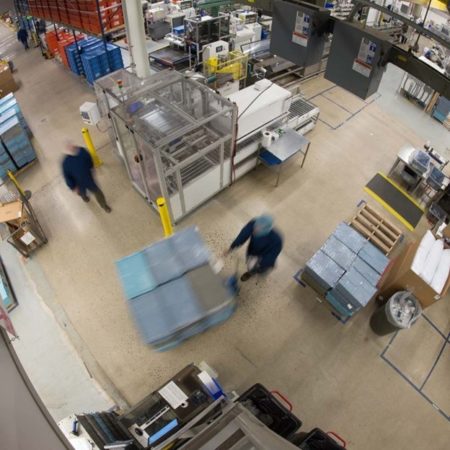Corning Life Sciences ramps up manufacturing, invests millions to reduce shortages
Back

Across the industry, manufacturers and suppliers are working to fulfill orders of at least double the volumes seen before COVID-19. Corning Life Sciences has seen orders grow by 200-percent. Demand for automation tips, microplates, cryogenic vials, and tubes for testing kits are especially high.
Demand, when paired with raw material shortages, disruption to freight services, and government directives, has created delays at nearly every point in the supply chain — from raw material suppliers, to manufacturers, distributors, and, ultimately, to scientists.
Corning Life Sciences has been aggressively expanding its production capacity and processes to minimize the impact.
Lydia Kenton Walsh, Corning’s Vice President of Commercial and Business Operations, shares how in this Q&A.
 Q: How has the pandemic affected the life sciences supply chain?
Q: How has the pandemic affected the life sciences supply chain?
Kenton Walsh: One of the most significant ways is by high demand. I’ve never seen a situation like this in more than 30 years in the industry. While some labs closed at the start of COVID-19, many others were asked to stay open to develop tests, treatments, and vaccines at record pace. With all this critical work happening, manufacturers such as Corning began to see a surge in our customers’ demand for a number of lab products.
Corning also participates in rated orders as part of the U.S. Defense Production Act. This prioritizes critical government-mandated products, which can affect how we fulfill orders.
There are also shortages in raw materials such as resin, packaging materials, and other components needed to manufacture finished goods. Together, these factors have pushed demand to new levels on top of normal annual growth. In response, Corning has ramped up our manufacturing and shipping operations—in fact, in the first months of 2021 we’ve shipped more products than ever before in our more than 100-year history.
Q: How are these demand surges affecting how products get to customers?
Kenton Walsh: Right now, surges tied to COVID-19 are depleting product inventory and raw materials for many products, leading to backorders on both the manufacturer and the distributor sides. Still, even once the product gets to distributors from the manufacturer, the distributor decides how they’ll allocate it which can affect which customers receive the product. Manufacturers like Corning do not have visibility into how these orders get prioritized, which makes it difficult to communicate directly to customers when products will reach their labs.
Q: What is Corning doing to reduce the number of backordered products?
Kenton Walsh: For the short-term, we’re running our operations 24/7 at all manufacturing plants that have backorders, and our internal distribution centers have extended their hourly operations with the intent to get every possible increase in output. Our employees are committed to doing everything they can to support the critical work of researchers.
We’re investing in long-term solutions, with more than $500 million being spent between 2020 and 2021 for new global capacity improvements. That amount includes government co-investments in the U.S. and China to support domestic manufacturing of critical supply chain components, products supporting COVID-19 testing, and future pandemic preparedness and response.
In the meantime, we’re providing a steady flow of products to our distribution partners, increasing what we’re able to manufacture and ship to fulfill current orders, and rebuilding safety stock inventory levels. We’re confident these measures will reduce shortages, but we do expect our most in-demand products to be on rolling backorder throughout most of 2021.
Q: If an item is on backorder, what can customers expect?
Kenton Walsh: Regular communication, for one thing. For customers who order directly with Corning, our customer service team can provide estimated promise dates on products that are available now or are scheduled to be manufactured within the next 90 days.
Timelines are also being provided regularly to our authorized dealers who communicate directly with customers. When a promise date is available, it’ll be reflected in the open orders report that we regularly send to our distributors.
Q: How long before the supply chain gets back to normal?
Kenton Walsh: For some products, it could be within the coming weeks and months. But for others, it might not be until the latter part of 2021 when products start to come out of backorder for normal fulfillment.
We understand this has been a frustrating time for customers, and we sincerely appreciate their patience, collaboration, and understanding. We want our scientific community to know that we are doing everything we can to manufacture and ship products as quickly as we can to support critical life sciences work.
